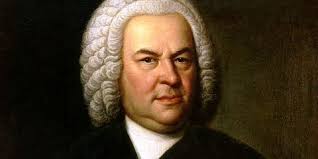Johann Sebastian Bach’s The Well-Tempered Clavier (Das Wohltemperierte Klavier) stands as one of the most monumental works in the history of Western classical music. Composed in two separate books, each containing 24 preludes and fugues in all major and minor keys, this collection showcases Bach’s genius not only as a composer but also as a teacher and theorist. The work has served as a foundation for countless musicians and composers for over 300 years.
A Revolutionary Idea
At the time Bach composed the first book in 1722, the concept of “well-tempered” tuning was still relatively new. Prior to this, keyboard instruments were typically tuned to favor certain keys over others, meaning that some keys sounded more pleasant while others were dissonant or unusable. The well-tempered tuning system allowed instruments to play in all 24 keys—12 major and 12 minor—with relative consistency in sound quality.
Bach’s Well-Tempered Clavier was essentially a demonstration of the musical possibilities unlocked by this new tuning system. It was a revolutionary concept: a complete set of paired preludes and fugues exploring the expressive potential of every key, from the bright joy of C major to the deep sorrow of B minor.
Book I – Composed in Köthen, 1722
The first book was compiled while Bach was employed at the court of Köthen, where he had a fruitful period of instrumental composition. He titled it:
“The Well-Tempered Clavier, or Preludes and Fugues through all the tones and semitones, both as regards the major third or Ut Re Mi and the minor third or Re Mi Fa. For the use and profit of musical youth desirous of learning, and especially for the pastime of those already skilled in this study.“
This shows that Bach intended the work not only for artistic expression but also as a pedagogical tool. Each prelude and fugue pair is a masterclass in technique, style, and emotion.
Book II – Composed in Leipzig, Circa 1742
About two decades later, around 1742, Bach compiled a second volume of 24 preludes and fugues in all keys. Although not originally titled Book II, it has come to be known as such in modern times. Bach was then serving as the cantor at the St. Thomas Church in Leipzig and had access to a thriving musical community.
The second book is more expansive and mature in its musical language, reflecting the stylistic evolution of Bach’s writing over the years. It demonstrates an even greater complexity in counterpoint and structure, suggesting that Bach was no longer just teaching but also deeply exploring new compositional possibilities.
Influence and Legacy
The Well-Tempered Clavier had an immense influence on the development of Western music. It was studied by later composers such as Mozart, Beethoven, Chopin, and Shostakovich—who would go on to write his own set of 24 Preludes and Fugues in homage to Bach.
Beyond its historical significance, the work remains a staple in the repertoire of pianists and harpsichordists, as well as an essential part of music education. Its pieces are used to teach everything from finger technique to the principles of harmony and counterpoint.
A Timeless Masterwork
More than just an academic exercise, The Well-Tempered Clavier is filled with humanity, drama, and beauty. From the introspective Prelude in C major that opens Book I to the jubilant closing fugue in B minor of Book II, the collection takes listeners on a journey through the emotional and technical landscape of 18th-century keyboard music.
Johann Sebastian Bach’s vision, realized through The Well-Tempered Clavier, remains timeless—a towering achievement that continues to inspire musicians and audiences around the world.


No responses yet